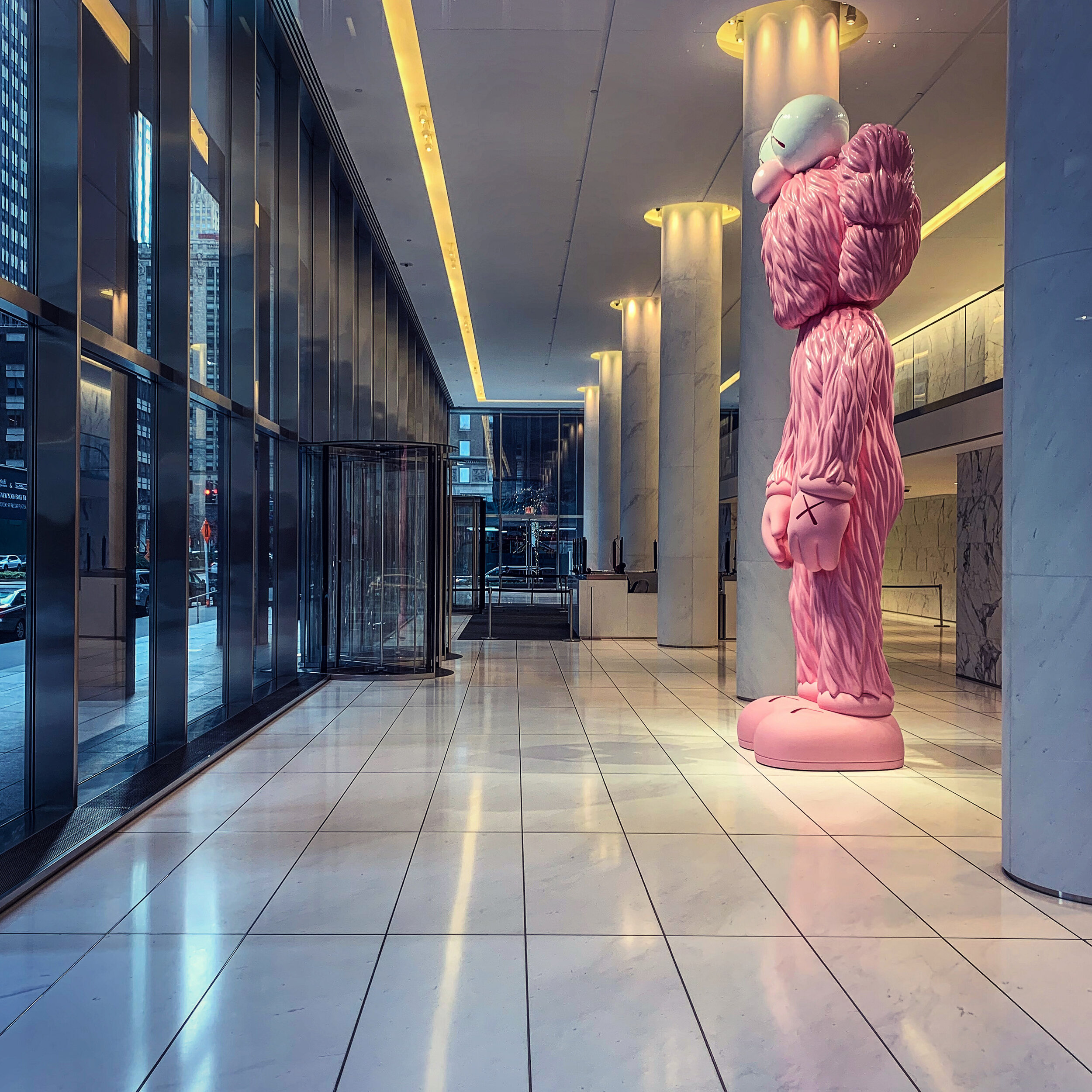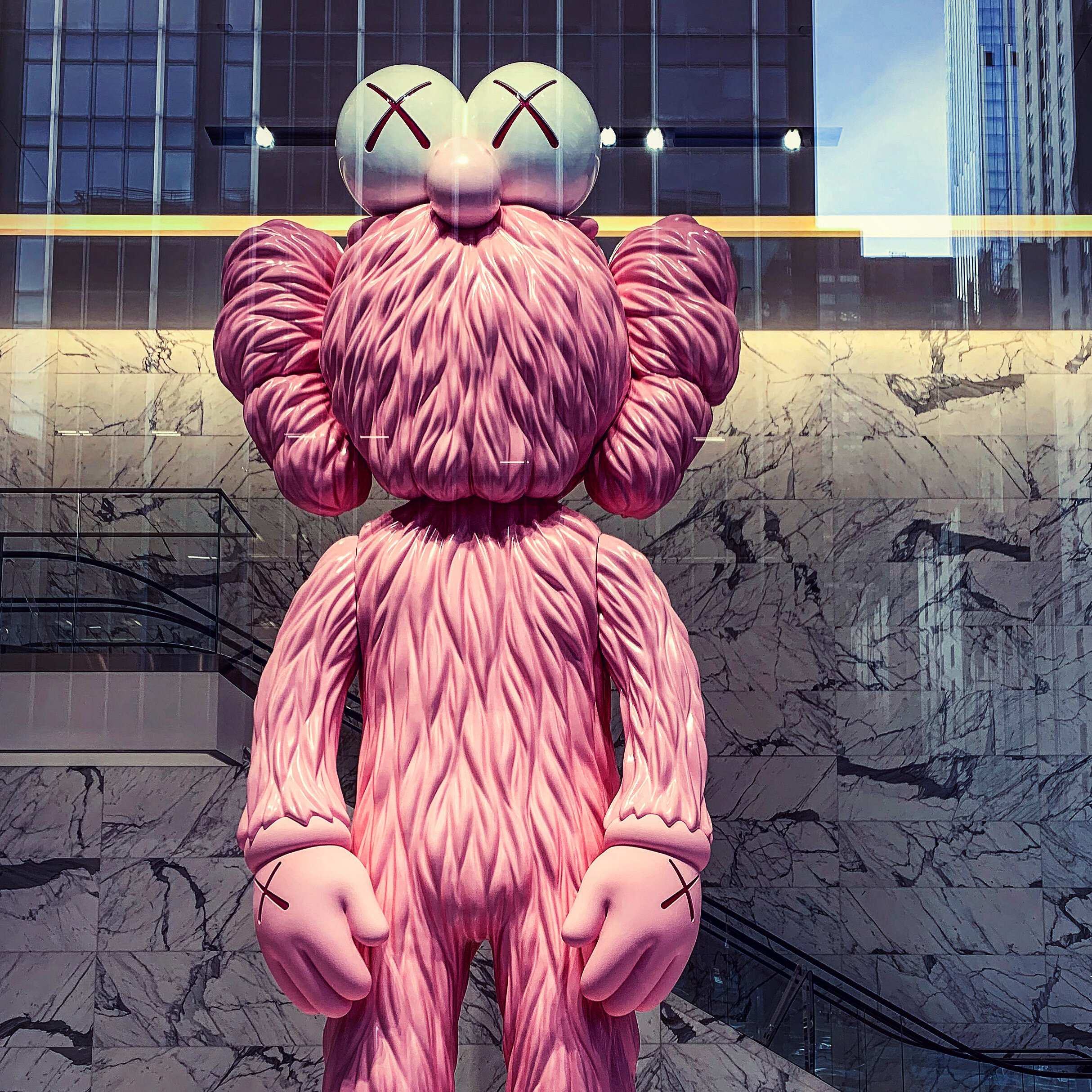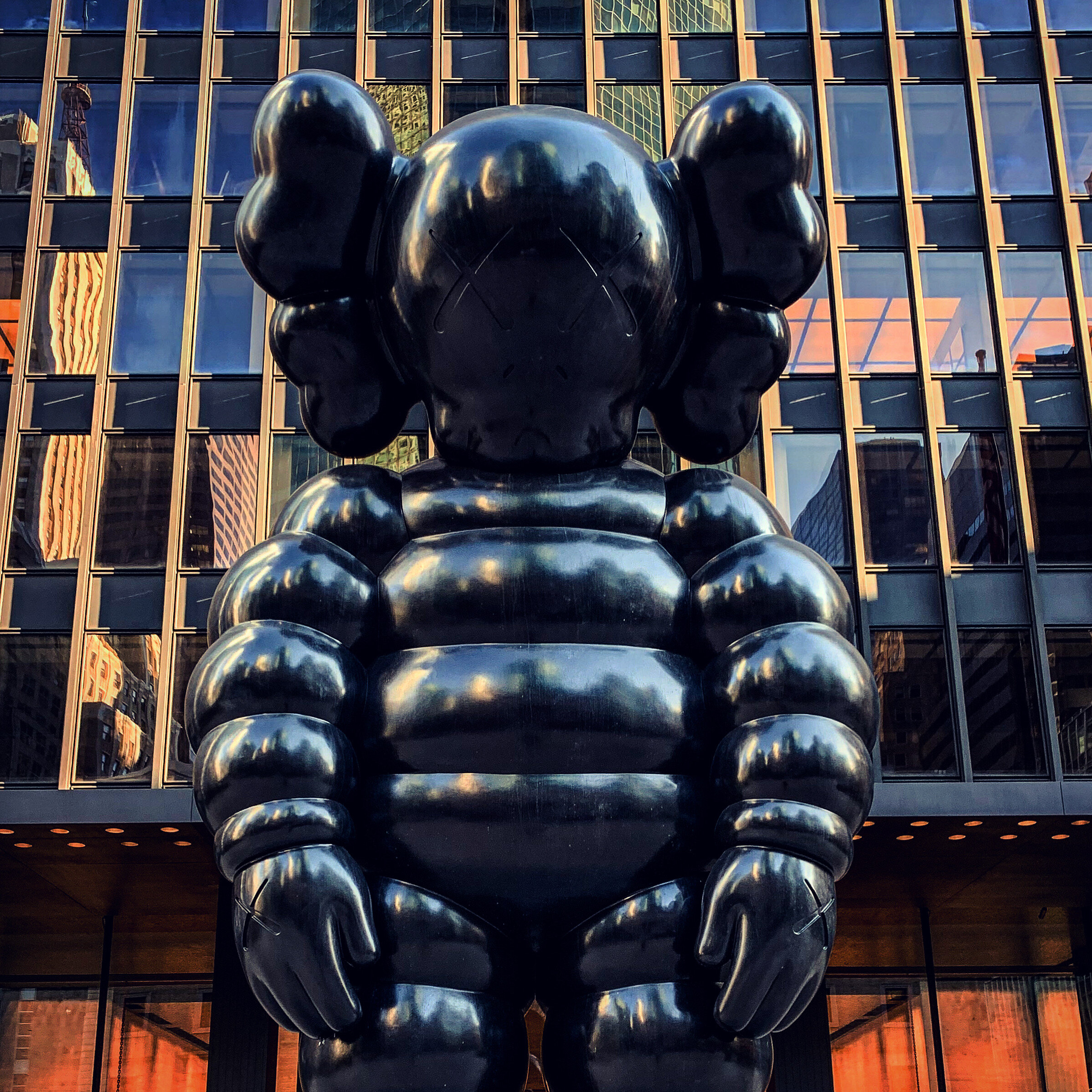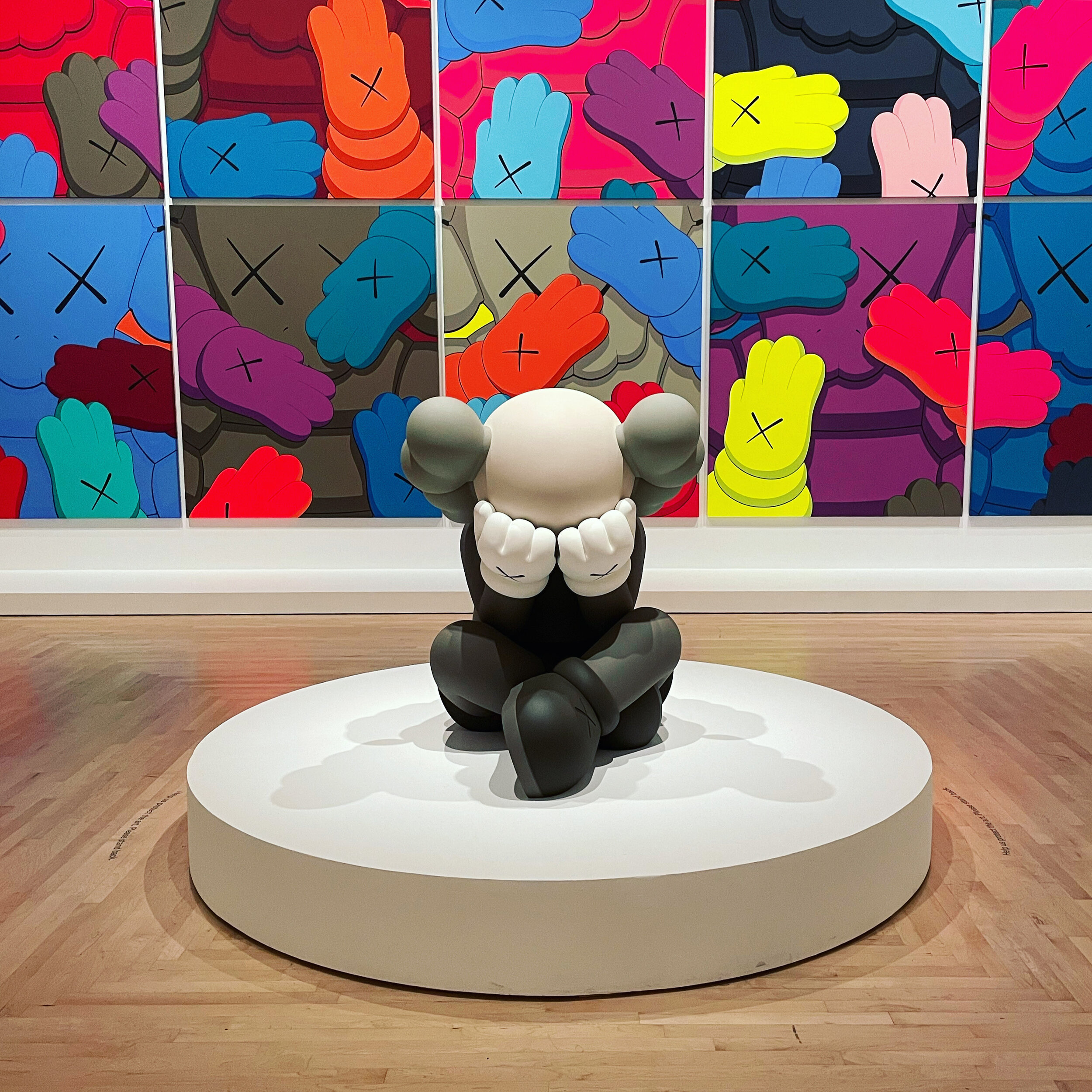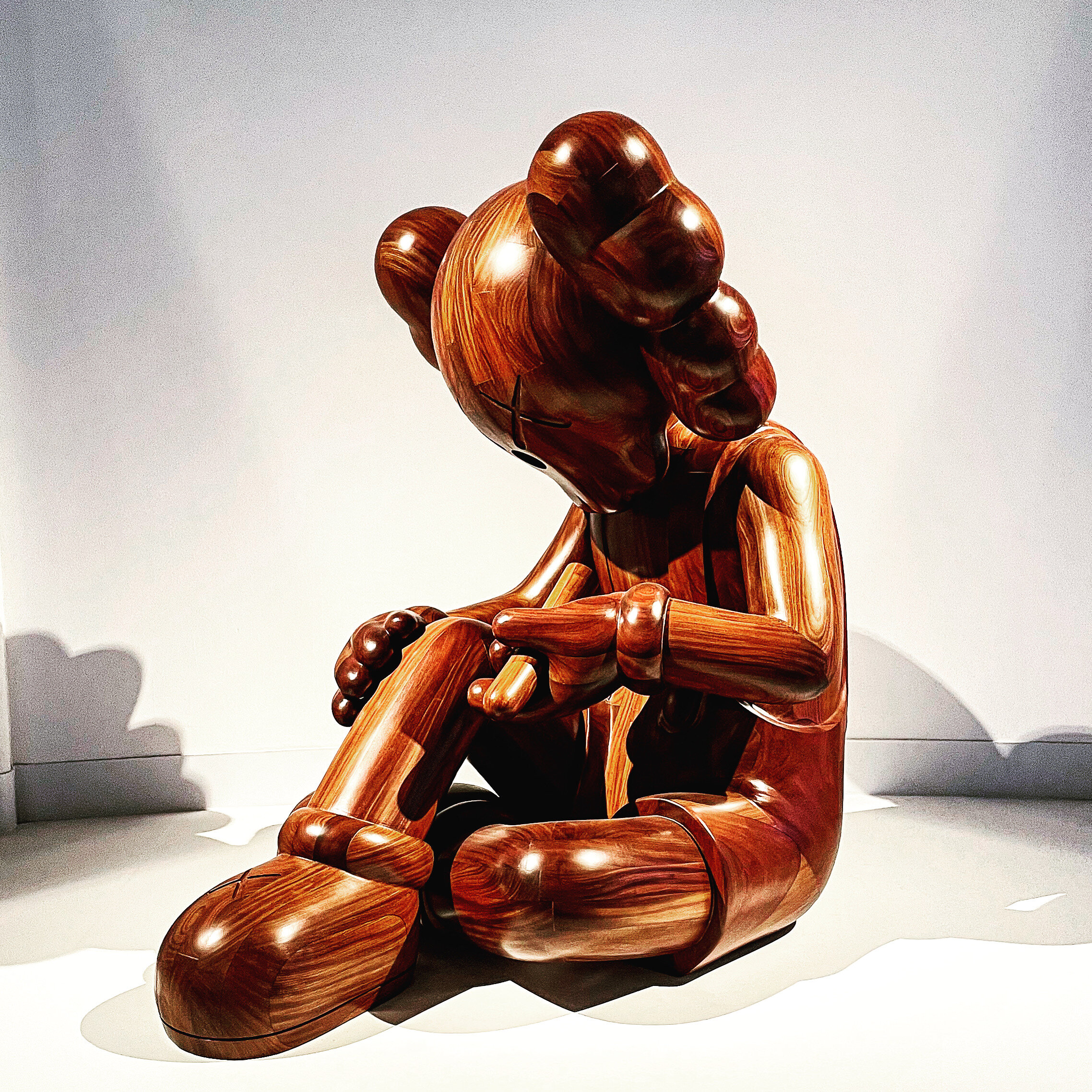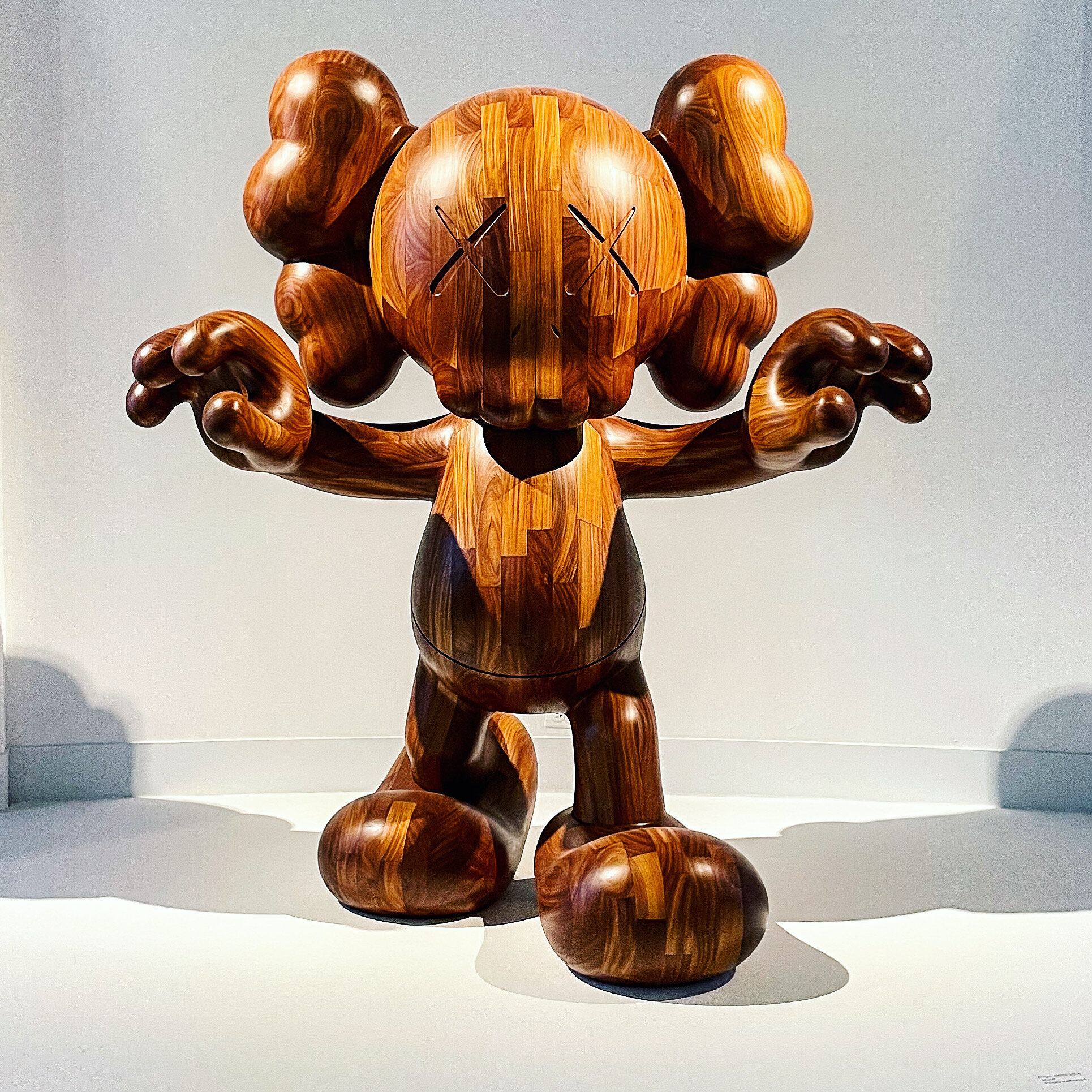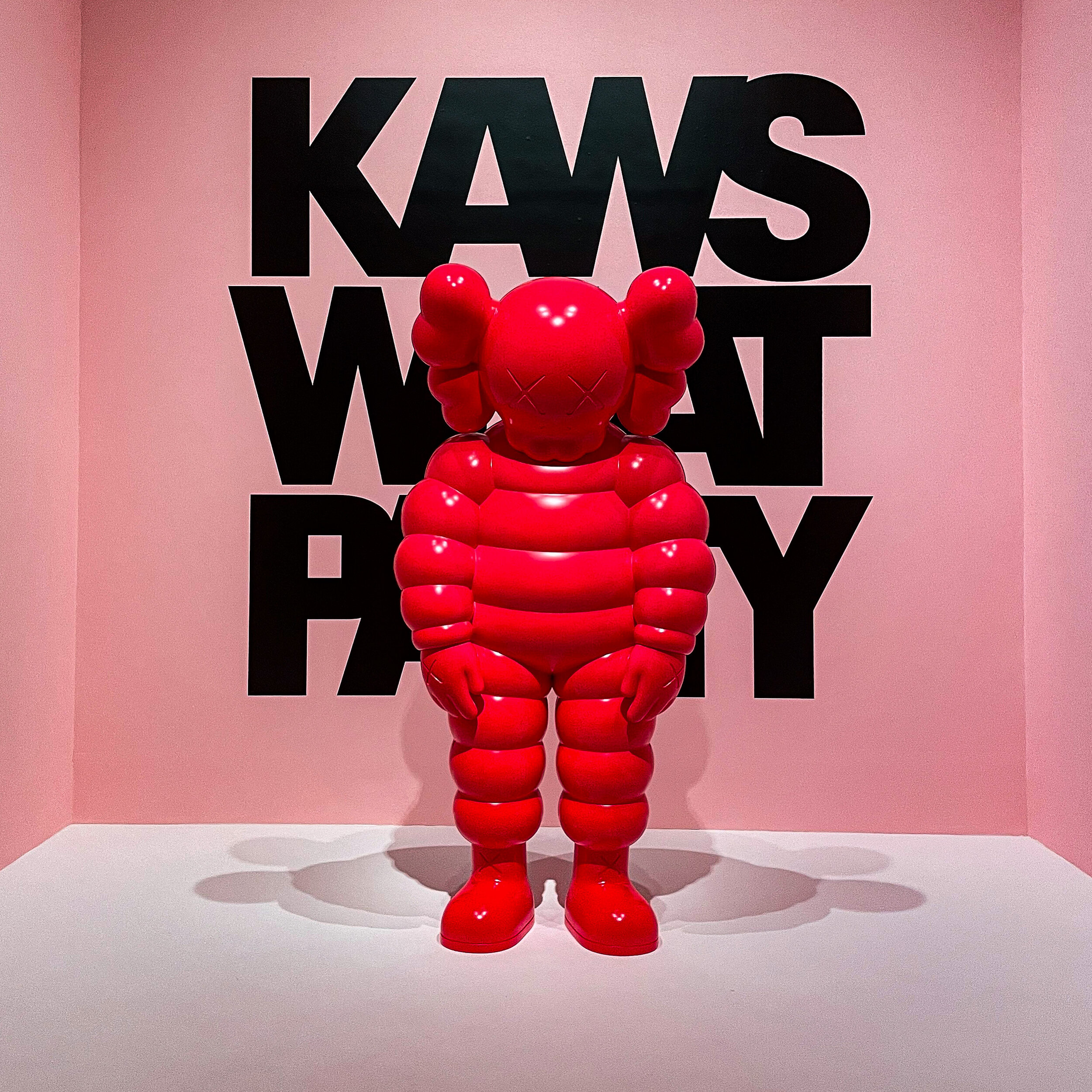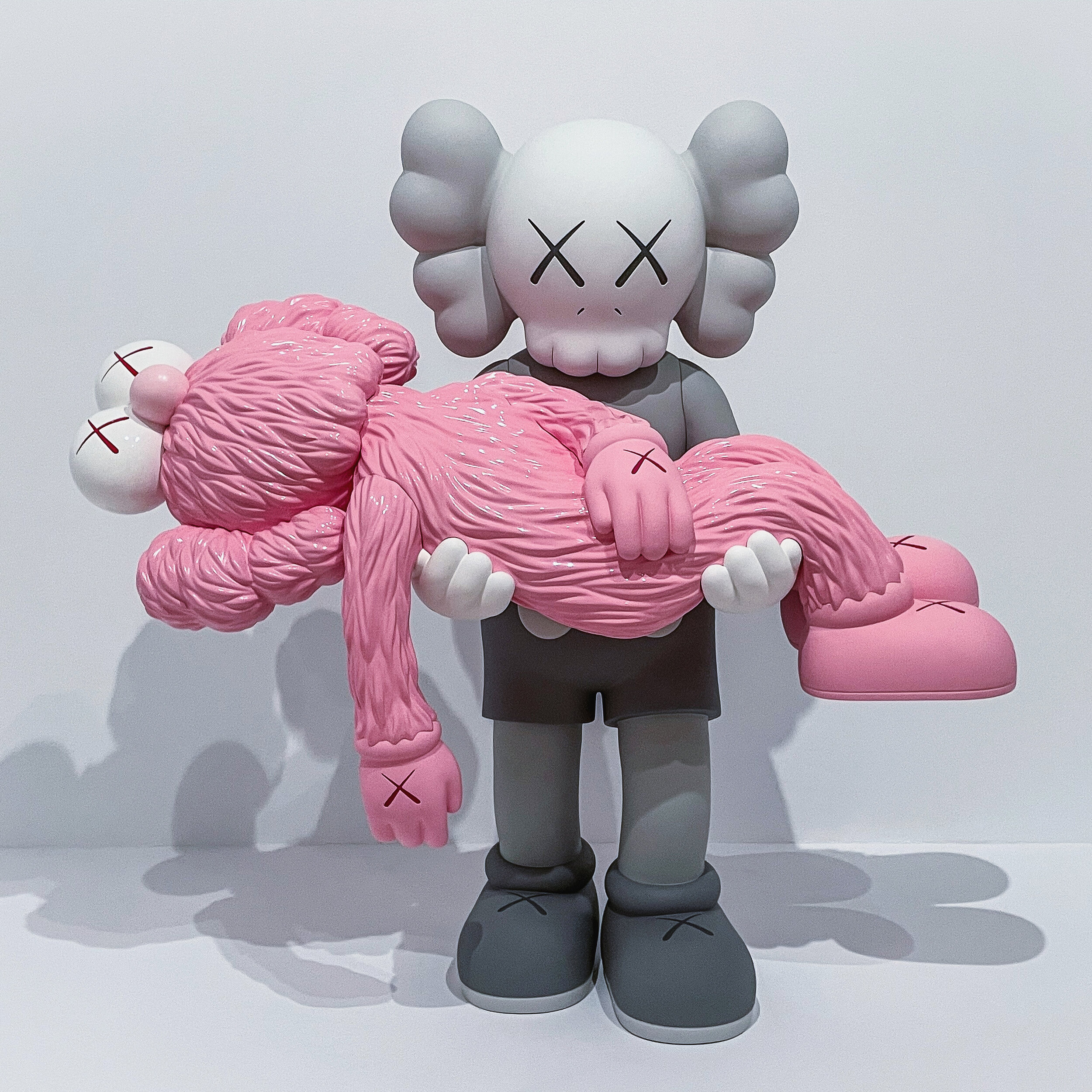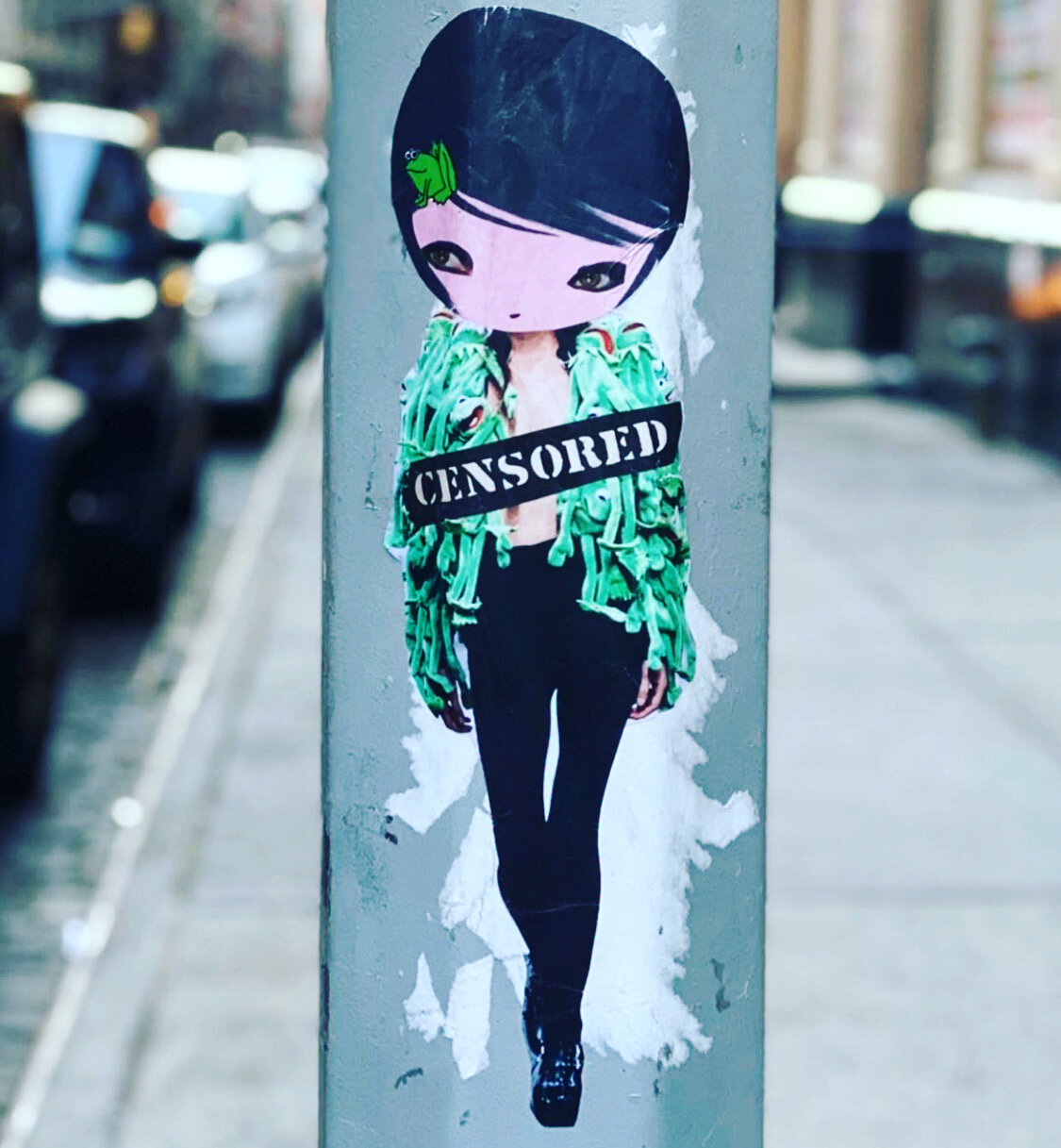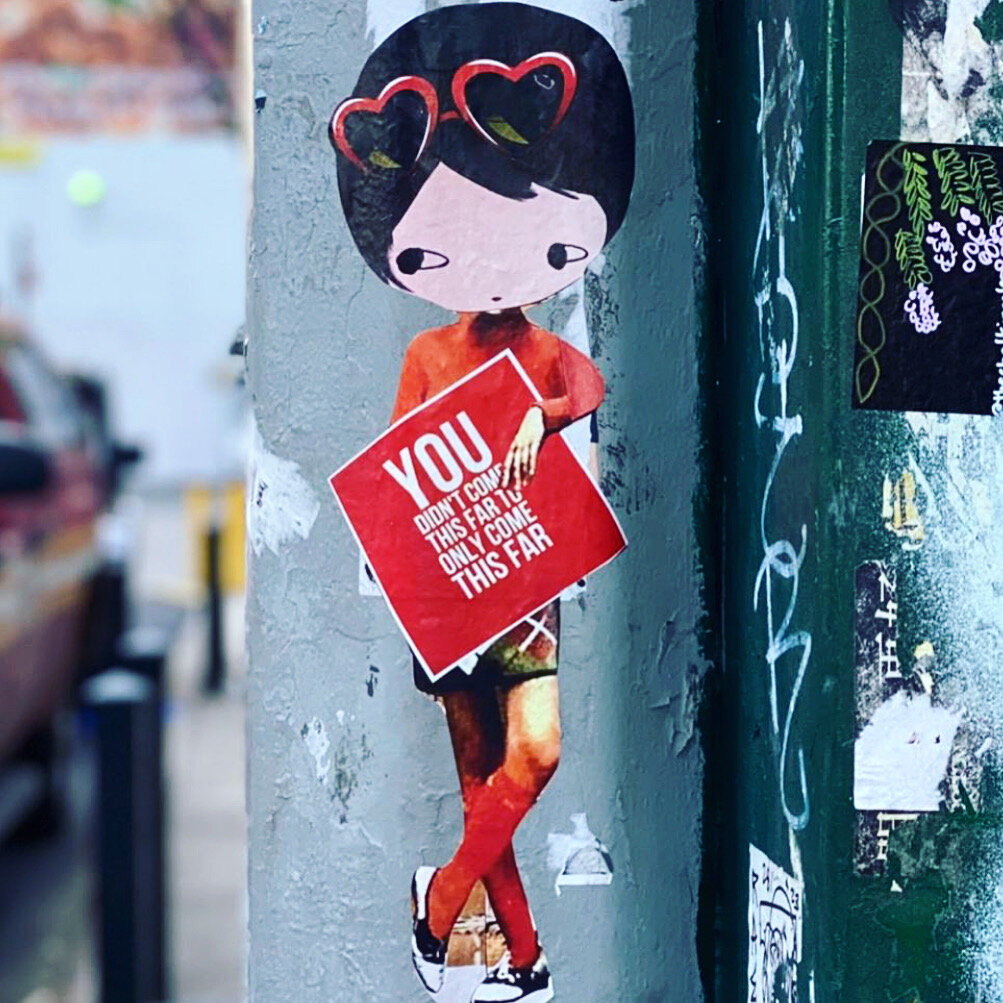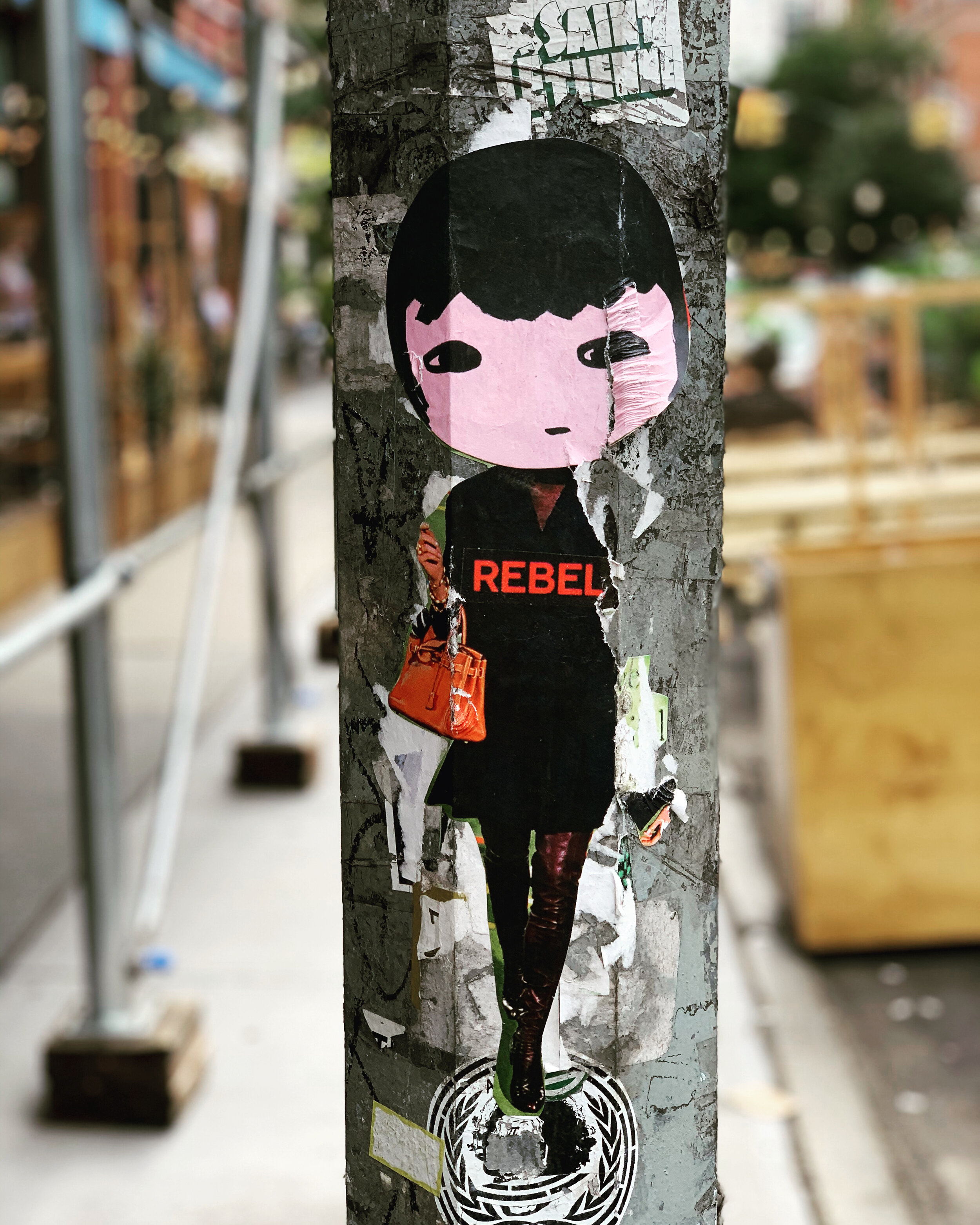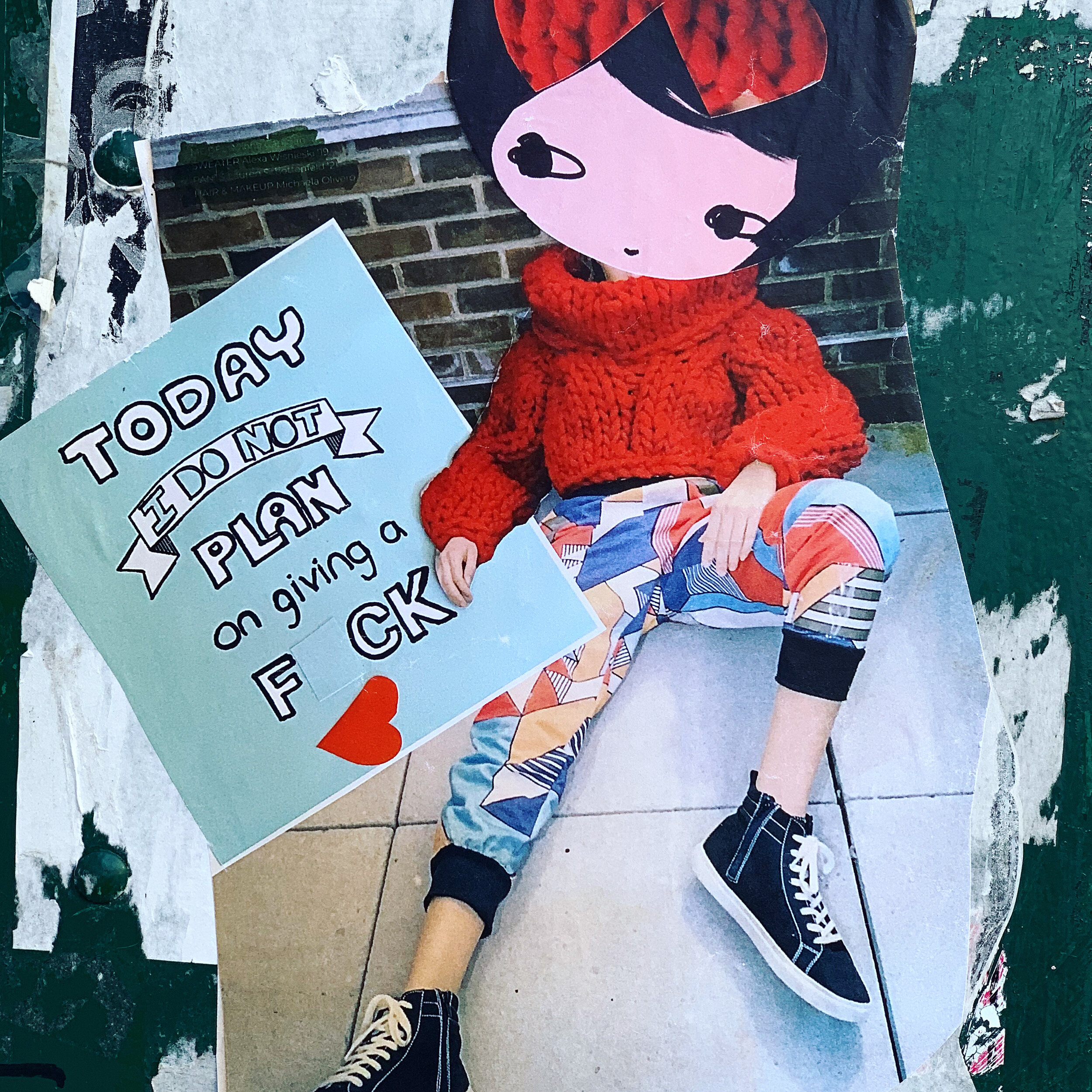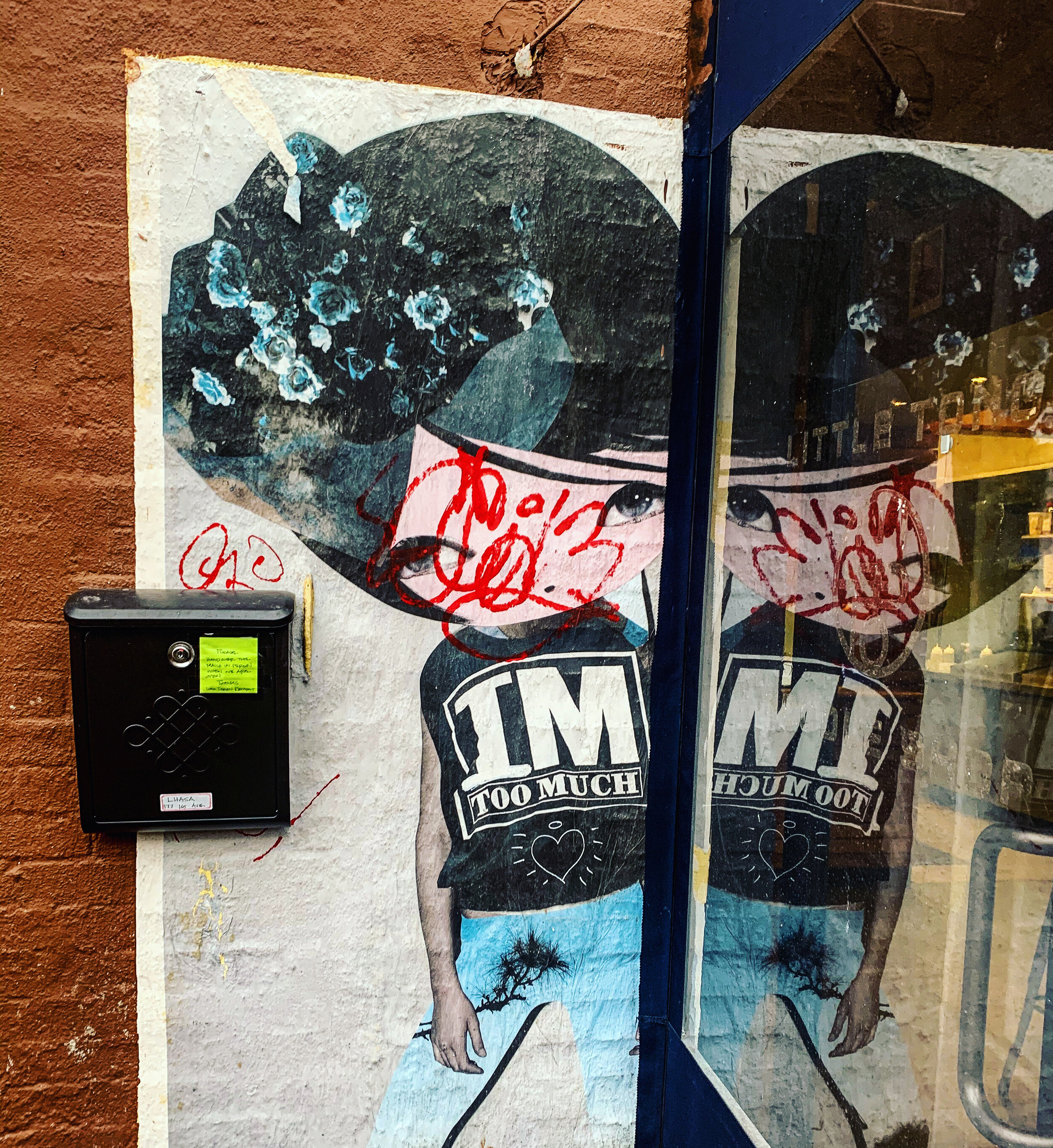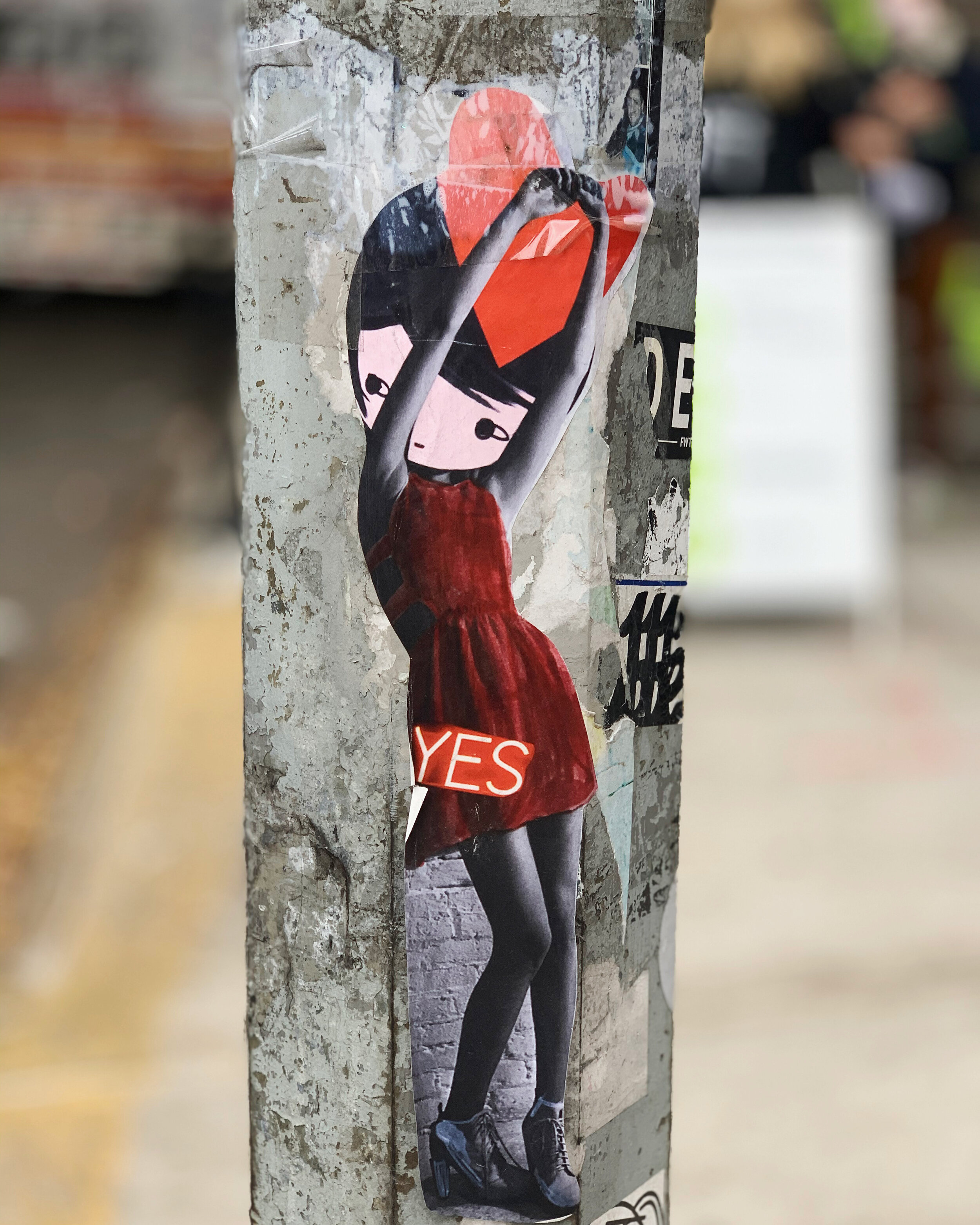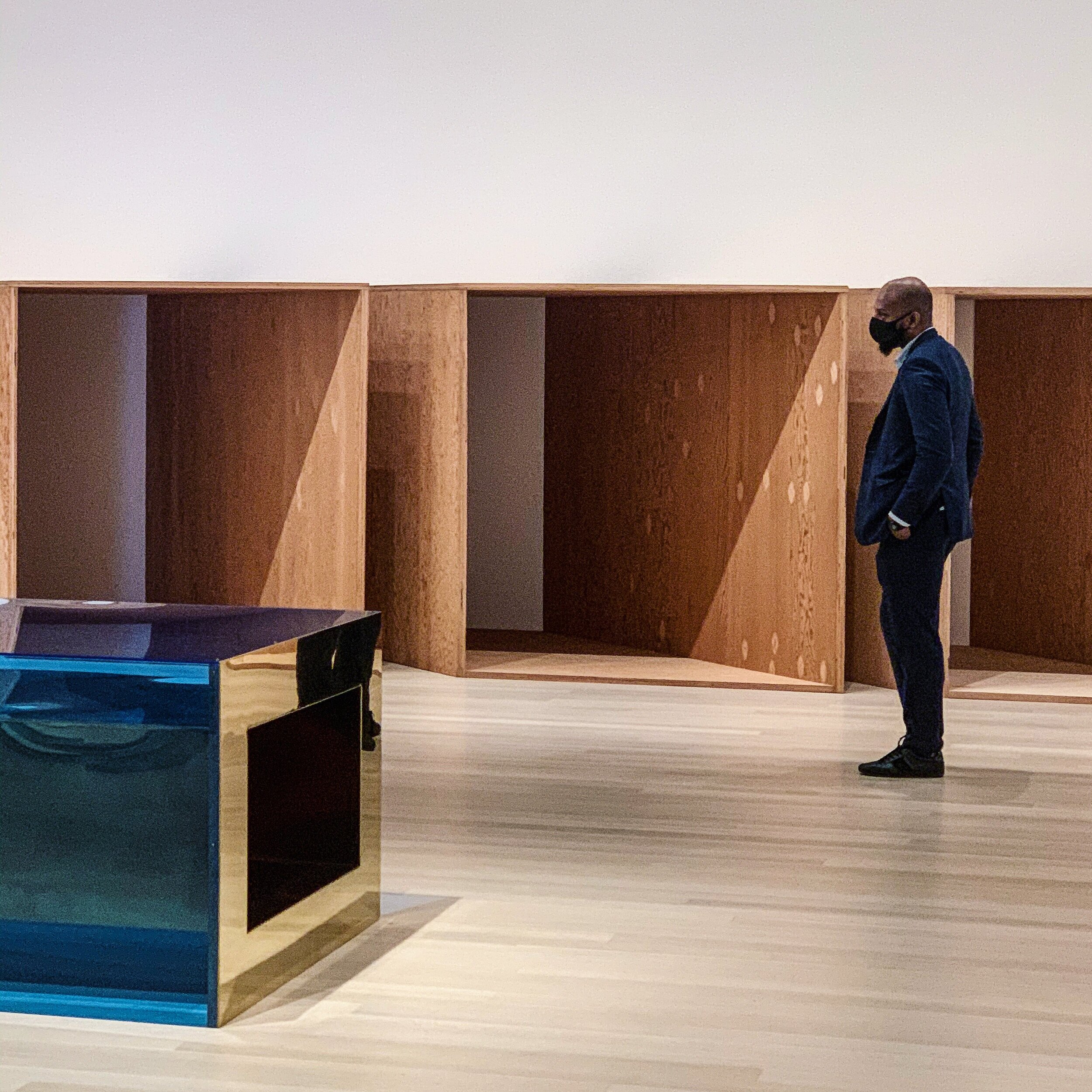WHAT PARTY? KAWS PARTY!
If you, like me, enjoy walking around New York City, you might have noticed them too. Sometime in the fall a set of familiar larger than life characters started appearing in the streets. The Michelin-man-like puffed up black and shiny CHUM caught my attention first. It is perfectly positioned against the stark geometry of Mies van der Rohe’s Seagram building. Whoever placed it there is a genius - the building, impressive on its own, provides a spectacular glowing backdrop at night.
Just a few blocks down on Park Avenue, the Pepto-Bismol pink BFF popped up. This one is more playfully located inside a glass and marble lobby. There, it can loom over visitors and “pose” for pictures during the day (judging from instagram feed, it is quite popular) and playfully peek out of its glass and steel “cage” after hours. It’s practically irresistible.
Turns out, there is more to their recent appearance than a simple public art placement effort. These familiar characters gave us a preview, a taste, of the show that has just opened at the Brooklyn Art Museum.
BROOKLYN ART MUSEUM: WHAT PARTY
The latest show, “What Party”, summarizes over a hundred KAWS works, from graffiti drawings and notebooks, paintings and sculptures, to smaller collectibles, furniture, and monumental installations of his popular COMPANION figures. It also features new pieces made uniquely for the exhibition along with his early-career altered advertisements. Read more about the show here.
BRIAN DONNELLY, AKA KAWS
Kaws has come a long way since his beginnings as a street artist in New Jersey and NYC. Always straddling the art and commercial line, his characters with X-ed out eyes and exaggerated skull and bone structure have become iconic. His art comes big and small - from collectible toys barely a few inches high to some of the largest sculptures to stand (or float, as was the case of the Companion in the Hong Kong Harbor) on the Earth. And he continues to evolve. More recently, he’s jumped into the digital space, teaming up with Acute Art, an augmented reality digital art platform that allows you to virtually explore his sculptures and create personalized experiences through an app on your smart phone.
His commercial success is pretty impressive, too. The toys based on his characters continue to sell out and command pretty hefty premiums on the secondary market and serious art buyers are now scooping up his work in droves. KAWS continuously breaks auction house records and in 2019 his works sold for $112 million. Earlier in the year, the Art Angle podcast predicted that i this year’s auctions, KAWS will outsell every old master other than Sandro Botticelli.
If you still want to learn more about KAWS, here and here are a couple of articles you might like.



